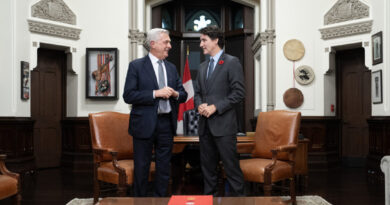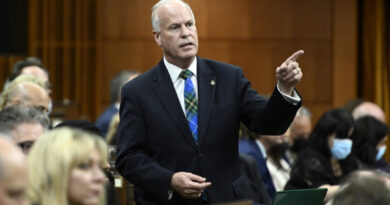Prime Minister Urges Lower NDIS Funding Increase to Ensure Sustainable Future
It’s all difficult stuff, making sure that we can make the NDIS the best version of itself, including the most sustainable version of itself.
Labor will not reduce funding for the National Disability Insurance Scheme (NDIS) but will attempt to lower its projected cost increases to make it more sustainable.
The federal government has tried to cap the annual growth of the NDIS to 8 percent as the scheme continues to be one of the country’s fastest-growing cost centres.
The May Budget revealed the annual cost of the scheme had reached $42 billion in 2024, and is projected to cost $90 billion by 2030.
Speaking on May 21, Mr. Albanese said that the scheme “needs to be made sustainable.”
“We want to make sure that everyone with a disability gets the support that they need so they can fully participate in Australian society. That’s the objective of the NDIS.”
The bill also sought to clarify the definitions of NDIS support, provide clarity around early intervention and permanent disability streams, and set out the manner in which an existing participant will transition from an old plan to a new plan.
“The proposed amendments will mean some changes in the way money is allocated and spent by individuals in the NDIS, and clarification over whether someone will receive NDIS funding until the age of 65 or receive NDIS funding for some years of early intervention into their disability only,” the bill noted.
Treasurer Jim Chalmers said the government has engaged with the states and territories to make sure that the scheme can “deliver for the people it was designed to serve.”
He added that funding of the disability scheme will continue to grow but the state and federal government “has a responsibility to make sure that we’re getting value for money.”
“It’s all difficult stuff, making sure that we can make the NDIS the best version of itself, including the most sustainable version of itself,” he told reporters.
NDIS Spending Reached $42 Billion
Meanwhile, NDIS Minister Bill Shorten stressed the need to build services outside the scheme, noting that the NDIS “can’t be the only lifeboat in the ocean which makes everyone just need to swim to that to get services.”
“People with disability don’t have time to wait … the presumption that somehow people with disability have got years to wait until some levels of government engage in their needs is wrong,” he told reporters in Perth.
“We want to get outcomes for people with disability. But a scheme can’t keep growing at 20 percent per year, one of the solutions that have been put to us by people with disability is that we need to build services outside the NDIS.”
He described the NDIS as “a chapter in the story of the lives of Australians with disability” but added that “it’s not the whole book.”
“What we need to do is reinvest in services for people with disability outside the scheme, so not all of them need to use the NDIS or get nothing,” he said.
“If we’re able to do our reforms, it‘ll be about $211 billion of investment over the next four years. If we don’t do our reforms, it’ll be more like $230 billion over the next four years.
“Why on earth would we expend $19 billion of taxpayer money when we could reinvest some of that in our schools and our hospitals, working with the states?”
The cost of the NDIS has been predicted to surge to $50 billion by 2025/26, higher than the annual Medicare bill.
According to the 2024-25 federal budget documents released on May 14, the government would splash a further $468.7 million (US$310 million) on the taxpayer-funded scheme to get it “back on track.”
The funding includes $268.1 million to “better protect NDIS participants and prevent fraud” and $200.6 million to “design and consult” based on the key recommendations of the independent NDIS review.
By April, more than 100 cases of alleged fraud in the NDIS have gone before the courts following thousands of tip-offs.
AAP and Alfred Bui contributed to this report.





